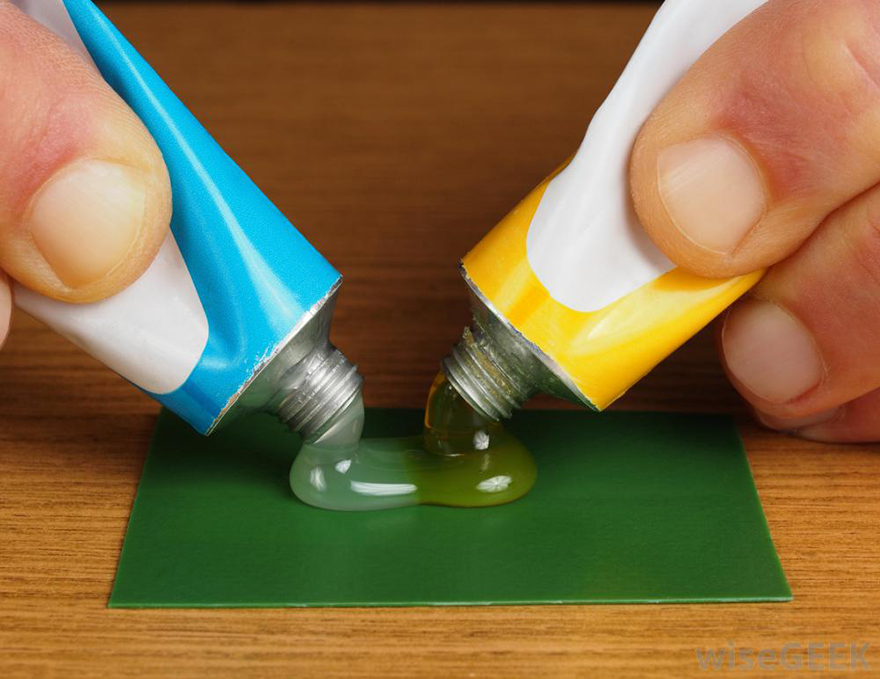
For those of you about to enter Industrial Design programs, you'll find epoxy resins are a staple studio adhesive. They're part of the class of super adhesives called structural or engineering adhesives, being a vital part of aircraft construction or on the smaller-scale, furniture design (see the wood fossil table below, made by Studio Nucleo), or even used in root canals, to bind the gutta-percha to the tooth.

Epoxy resins react with what are called polyfunctional amines, acids as well as phenols and alcohols - all commonly known as hardeners or curatives. Once mixed such epoxies transform from a liquid to a solid and become very strong, withstand high temperatures and have high chemical resistance. They are called thermosetting resins, because they cure by internally generating heat.
The important thing to note when one is mixing epoxy resins is the epoxide number which represents the amount of epoxide in 1 kg of resin. This number is used to measure how much hardener you'll need to cure the epoxy. However, the mix ratio can vary by as much as 10 times, from 10:1 to 1:1. Some epoxy resin / hardener combos will cure at room temperature but most need a lot of heat, from 150 degrees Celcius and up to 200 degrees Celcius. If the resin is not heated properly the material will lose its super adhesive properties.
 See the above Wood Fossil Table here.
See the above Wood Fossil Table here.






















